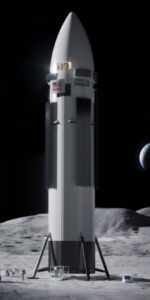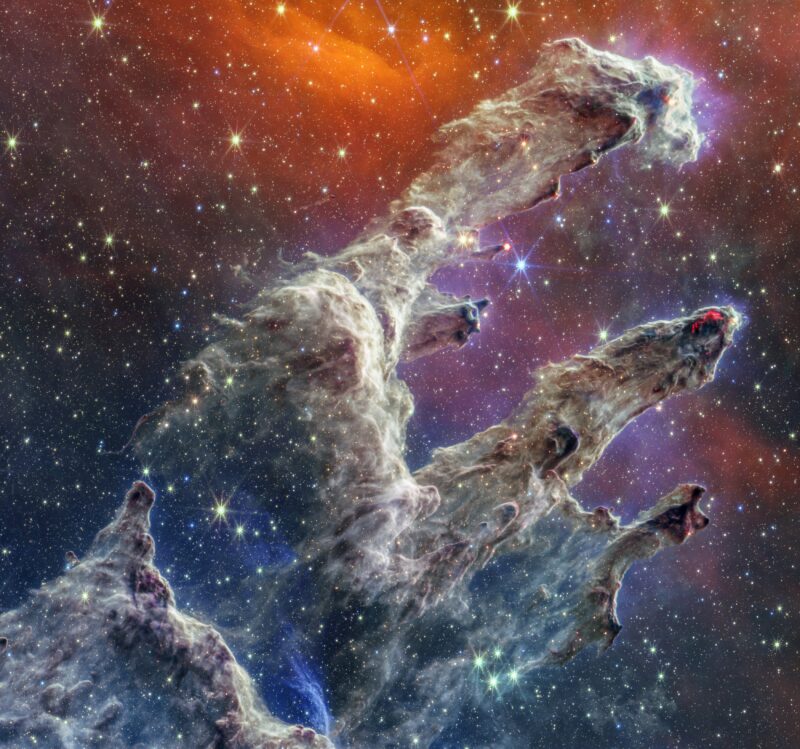
Two years ago, astronomers and astrophysicists received the greatest Christmas gift in the history of the field. At 7:20 AM on December 25th, 2021, a European Ariane 5 rocket lifted off of its launch pad and into a thick cloud bank. Its payload was NASA’s James Webb Space Telescope (JWST). During the years prior to its launch, the observatory was a subject of controversy and a frequent target for critics of space exploration. Due to its immense complexity, Webb required 25 years of development and cost 10 billion dollars. It is the most expensive single spacecraft ever built. Following its launch, Webb underwent a nerve-racking deployment sequence with 344 single points of failure. Thanks to meticulous testing and the attention of a 10,000-person team, this phase of the mission proceeded like clockwork.
When the first images from Webb arrived in July of 2022, its critics were largely silenced. The telescope has already revolutionized our understanding of the formation of galaxies, the birth of planetary systems, and numerous other scientific disciplines. With its 21.7-foot gold-plated beryllium mirror, it has nearly three times the resolution and eight times the resolving power of the famous Hubble Space Telescope. Unlike Hubble, it is able to detect mid-infrared wavelengths of light, which can pass through clouds of cosmic dust. Webb represents a quantum leap in our ability to understand the universe.
Given its contributions to astronomy, it can be easy to forget that Webb has only been active for two years. Its science and engineering teams are still learning how to fully utilize the telescope’s capabilities. Additional profound discoveries and images likely lie ahead. 2023 was a significant year for the Webb team, as they were able to collect a full year’s worth of images and spectra. Over the past 12 months, they have compiled a gallery of breathtaking images. To celebrate the second anniversary of the James Webb Space Telescope’s launch, here are some of its best images of 2023. All images are credit of NASA and the Space Telescope Science Institute (STScI).
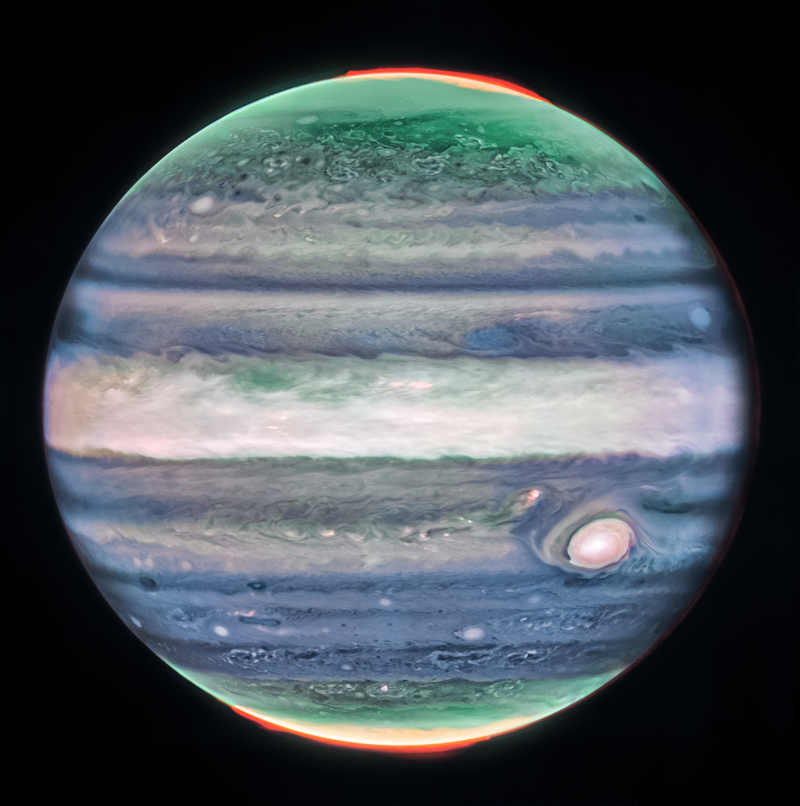
Fine details in Jupiter’s atmosphere are highlighted in this near-infrared image. This photograph revealed a previously-undiscovered high-altitude current of wind which circles the planet’s equator. The Jovian jet stream overlies the white zone of clouds north of the famous Great Red Spot. With a velocity of 320 miles per hour, this powerful current has twice the wind speed of a Category 5 hurricane. While a series of spacecraft have studied Jupiter from close range, this particular feature was transparent to their cameras. To fully understand any planetary or astronomical target of interest, we need to collect data across the entire electromagnetic spectrum.
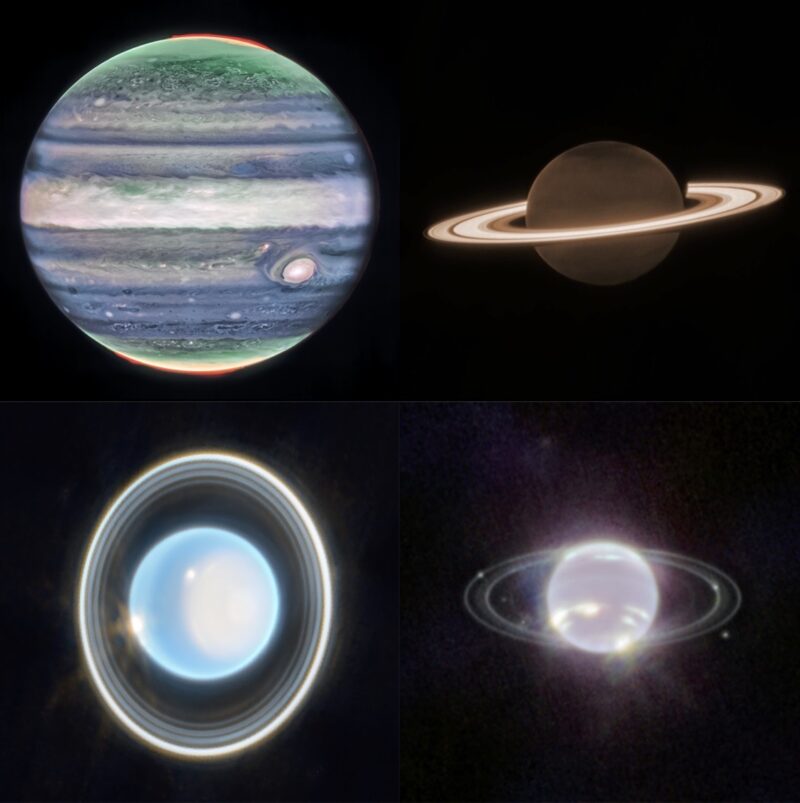
Readers who are not satisfied with one planet should try looking at four! Neptune (bottom right) was studied by Webb in 2022. However, the observatory trained its gaze on the other three giant planets (Jupiter, Saturn, and Uranus) for the first time this year. This will be an annual task for Webb. With the exception of Jupiter, the outer planets are not currently being studied by spacecraft. Therefore, telescopic observations provide the only feasible means to track changes in their atmospheres. Our knowledge of Uranus and Neptune, in particular, is limited. Close-range observations of these planets are limited to data from Voyager 2, which conducted brief flybys of the ice giants in 1986 and 1989, respectively. Again, Webb’s infrared vision is useful, as it is able to detect pale yet warm clouds and storm systems in the planets’ atmospheres.
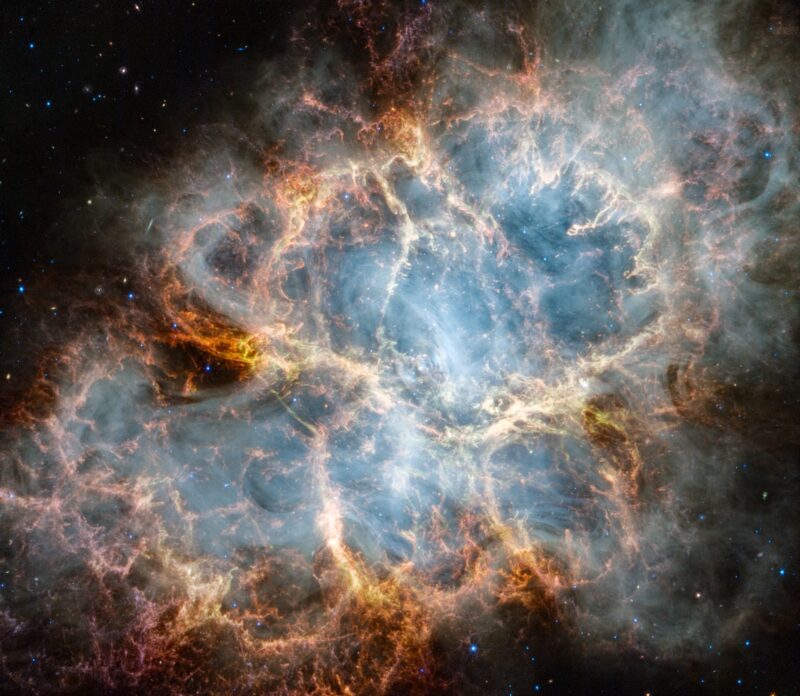
The Crab Nebula is a favorite target of amateur and professional astronomers alike. It was produced when a blue supergiant star collapsed on itself and exploded as a supernova in the year 1054. For several weeks, the supernova was visible to the naked eye in broad daylight. Shockwaves from the blast sculpted the refuse into intricate tendrils of gas and dust. A neutron star, or pulsar, remains at the center of the nebula. Webb’s image builds upon nearly a millennium of observations of this iconic feature. It highlights faint wisps of gas and dust within the Crab Nebula.
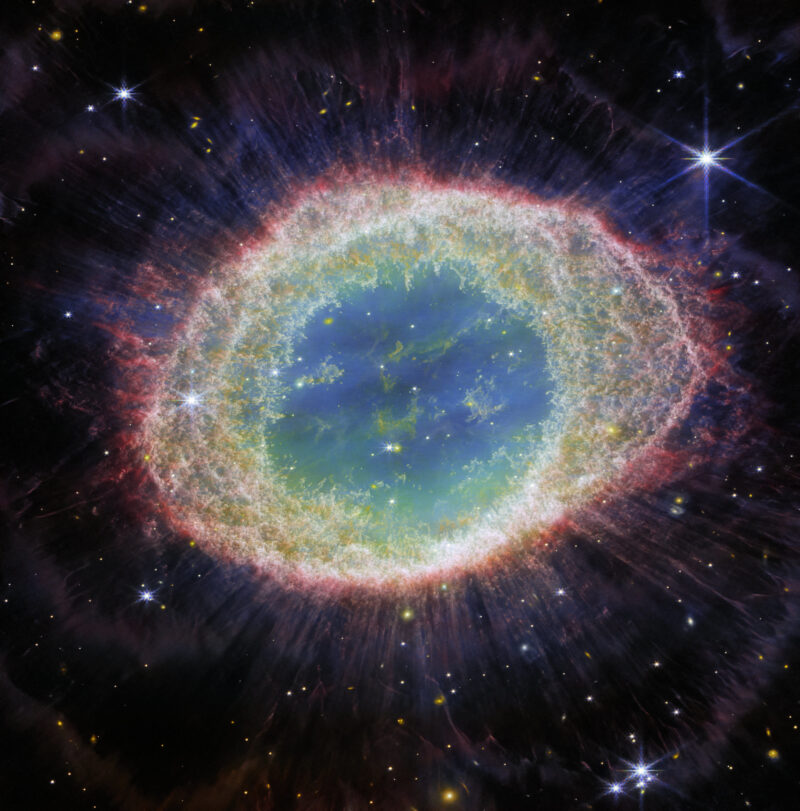
Other stars experience more gentle deaths. Like supergiants, smaller Sun-like stars collapse upon themselves when they deplete the light elements in their cores, which serve as “fuel” for nuclear fusion. (The details of this process are more complex, but that explanation should suffice for this article). However, medium-sized stars simply shed their outer layers in an expanding ring of gas and dust. These features are known as planetary nebulae, as they resemble Uranus and Neptune when seen through a small telescope. Webb can reveal fine, previously invisible details in the structures of these nebulae; the Ring Nebula is seen here.
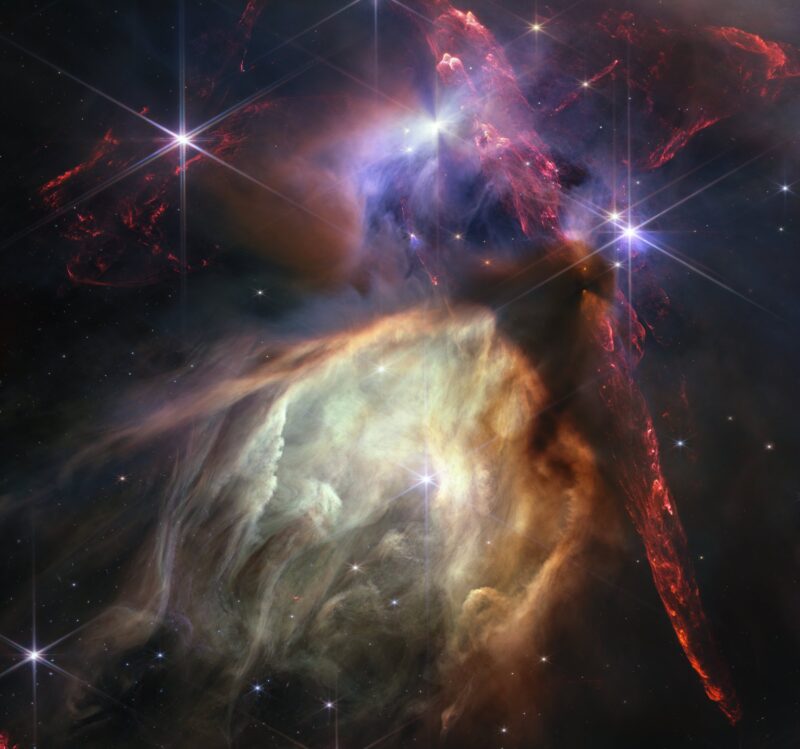
Webb also studies the opposite end of the stellar lifecycle. Stars are created in massive, glowing nebulae. Gas and dust are concentrated in these stellar nurseries. Swirling accumulations of this material can become sufficiently large for gravitational forces to draw in surrounding material, driving a positive feedback loop (“snowball effect”). If they become large enough to fuse hydrogen into helium and produce light, these accumulations of gas turn into stars. To celebrate its first year of scientific observations, Webb imaged this particularly beautiful nebula. Known as Rio Ophiuchi, it is the closest star-forming nebula to Earth. This scene contains approximately 50 newborn stars, many of which likely have planetary systems.
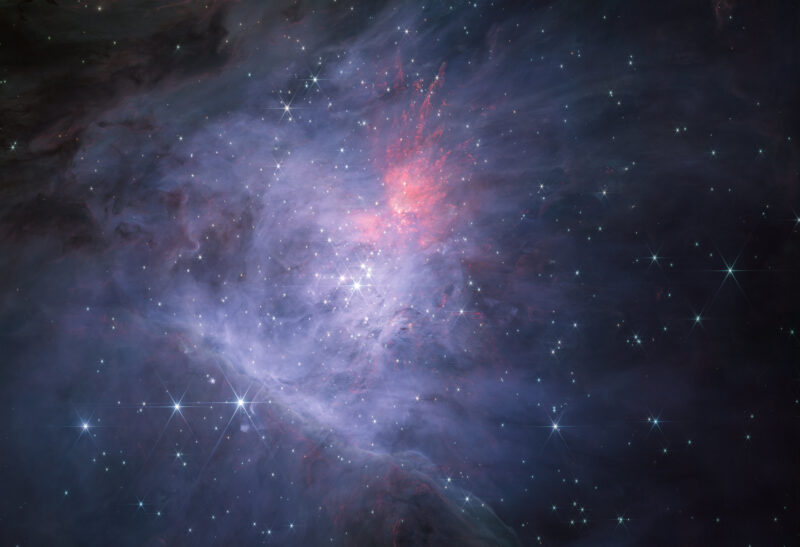
If Rio Ophiuchi is the nearest stellar nursery, the Orion Nebula is the most famous. Located in one of the most recognizable constellations, its faint, extensive glow is visible through binoculars. The brightest portion of the nebula is the Trapezium Cluster, which contains numerous newborn stars. This dynamic region of the sky is captured in this image from Webb. Like young people, young stars can be tempestuous and prone to outbursts. Regular solar flares from the stars of the Trapezium Cluster shape the gas and dust of the nebula into a detailed landscape clouds and filaments.
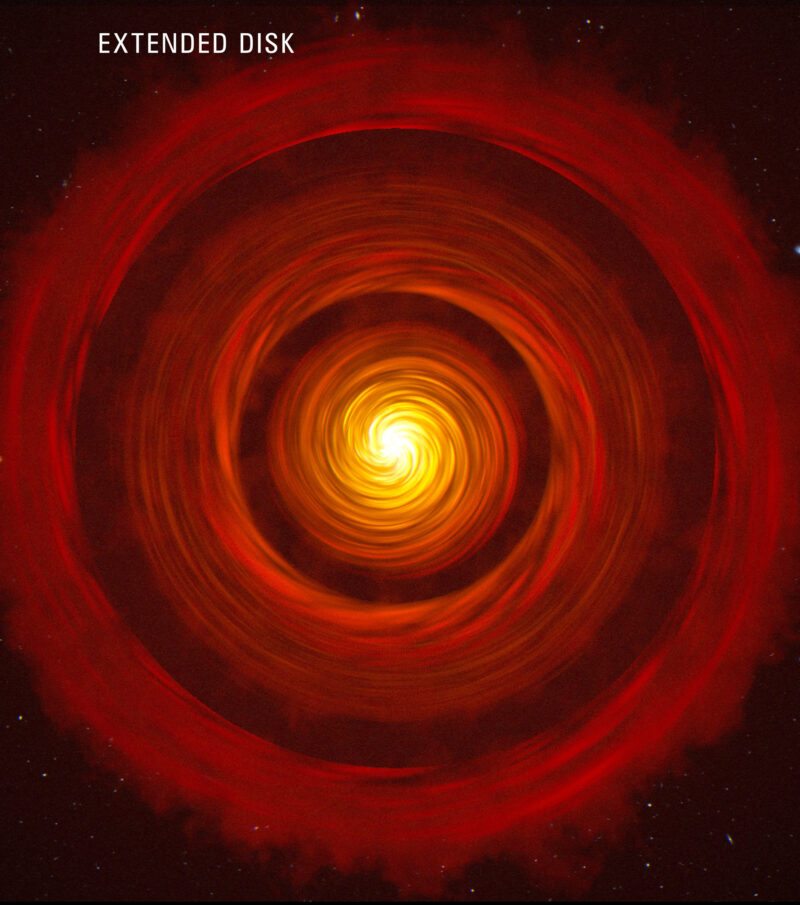
This artist’s concept is not an image per say, but it still illustrates one of Webb’s most profound discoveries. Due to gravitational forces, young stars are surrounded by spinning protoplanetary disks of gas and rocky material. The formation of planets within this disk is somewhat similar to the formation of stars. The largest rocky objects, or planetesimals, grow by gravitationally attracting additional material and gradually clearing smaller objects out of their orbits. In this rendering, dark dust- and gas-free zones are occupied by coalescing planets. Data from Webb allowed scientists to reconstruct the structures and compositions of four protoplanetary disks in unprecedented detail. Spectra from the observatory demonstrated that the inner portions of the disk are rich in water. In these planetary systems, water was likely delivered to the planets by comets and water-rich asteroids, just as it was in our Solar System.
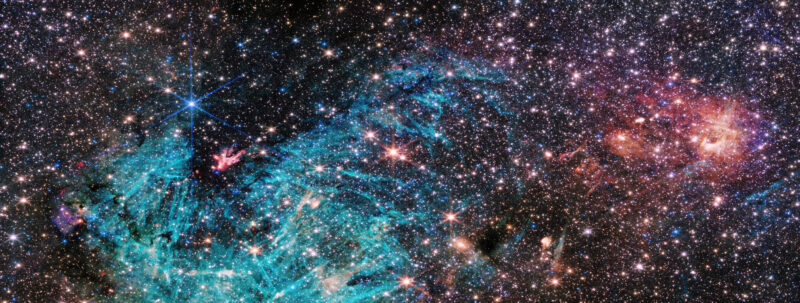
Yet another nebula, Sagittarius C, displays a beautiful blue hue in this recent image from Webb. This region is considerably more distant than the Orion Nebula. It is located in the center of our Milky Way galaxy, just 300 light years from the supermassive black hole at its core. While this might seem like a precarious location, the young stars in Sagittarius C are in stable orbits around the black hole. The center of the Milky Way is densely populated with stars; 500,000 of them are visible in this one photograph. It is worth noting that this image was requested by undergraduate student Samuel Crowe for his Honors thesis. Flagship missions such as Webb may be expensive, but they allow a wide range of people to participate in the thrill of discovery.
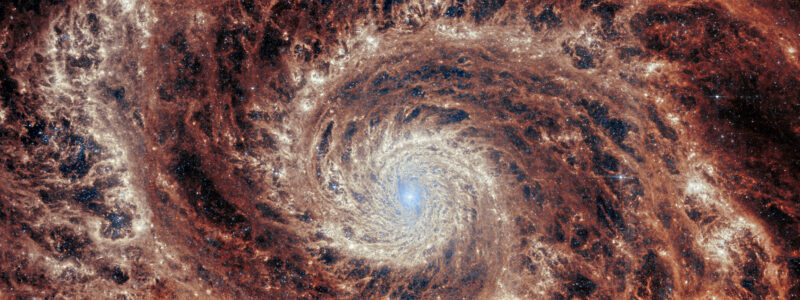
Webb’s images of galaxies are markedly different from Hubble’s familiar photos. However, they are splendid in their own right. Infrared images usually do not detect the distinctive azure hue of blue supergiant stars, but they excel at mapping tendrils of gas and dust. These regions are opaque to the human eye, but they are beacons of long wavelengths of light. M51, popularly known as the Whirlpool Galaxy, was the subject of one of Hubble’s best photographs. Webb complements this image by mapping the fine details of the galaxy’s stately, slowly-revolving spiral arms of stars, gas, and dust.
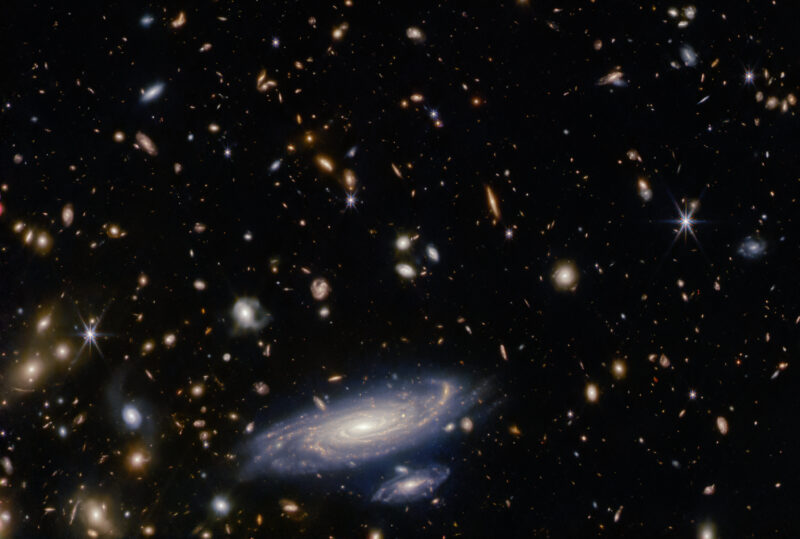
If you have a large enough telescope, even seemingly empty regions of the night sky are full of detail. Each pinpoint of light in this image is not a star, but a galaxy. The highlight of this Webb photo is a large spiral galaxy, but even this city of stars is not particularly remarkable. It has simply been assigned the designation LEDA 2046648. While is is much further from Earth than the Whirlpool Galaxy, Webb can still map its gorgeous spiral arms. The other galaxies in this image are considerably more distant than LEDA 2048848.
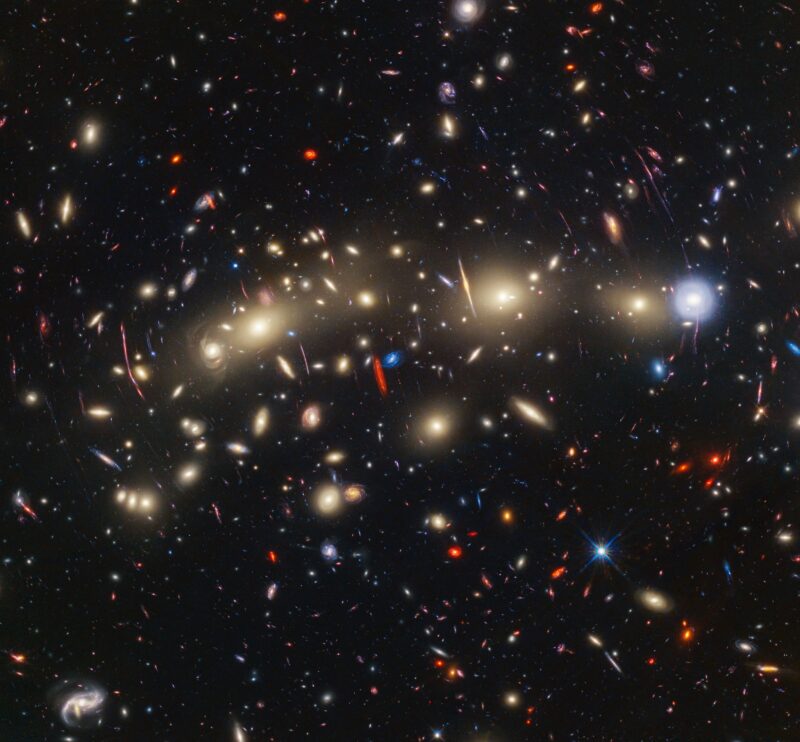
While it has revolutionized virtually the entire field of astronomy, Webb’s reason for being is the study of the early universe. Due to the expansion of the universe, the light from other galaxies is shifted towards red, and eventually infrared, wavelengths with increasing distance from Earth. We notice this phenomena, known as “redshifting,” on a regular basis when it is applied to much slower sound waves. For example, as an emergency vehicle drives away from a stationary observer, the pitch of its siren becomes progressively lower. The universe’s first galaxies cannot be detected by Hubble, as they solely emit infrared light. Webb has already discovered the oldest known galaxy, which formed just 325 million years after the Big Bang.
This image is the result of a collaborative effort between Webb and Hubble. Each observatory observes a unique region of the electromagnetic spectrum, and by combining their data, the two science teams can make synergistic discoveries. Hubble’s instruments captured a massive galaxy cluster known as MACS0416. These enormous galaxies act as a powerful gravitational lens which magnifies the distant galaxies behind them. The remote, redshifted galaxies, in turn, can be identified by Webb. Each of the hundreds of galaxies in this image contains hundreds of billions, if not trillions, of stars. Most of these stars are likely orbited by multiple planets, and if known exoplanets provide any indication, some of these worlds will defy even the most creative predictions of science fiction. The James Webb Space Telescope is opening our eyes to a universe of limitless possibilities.




